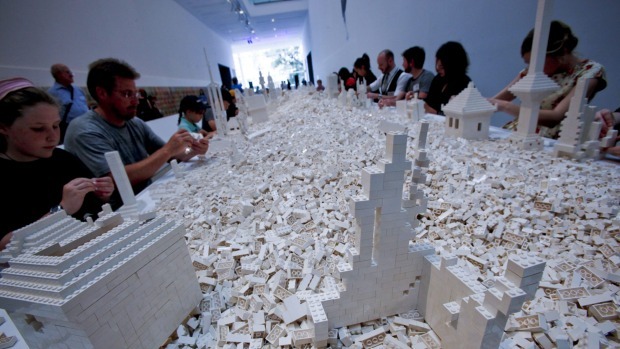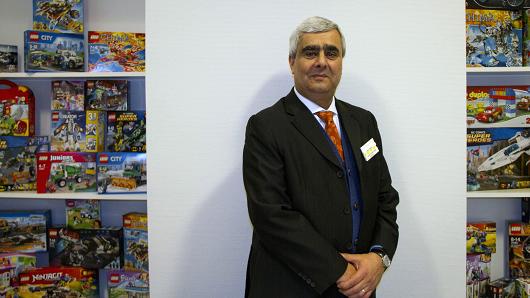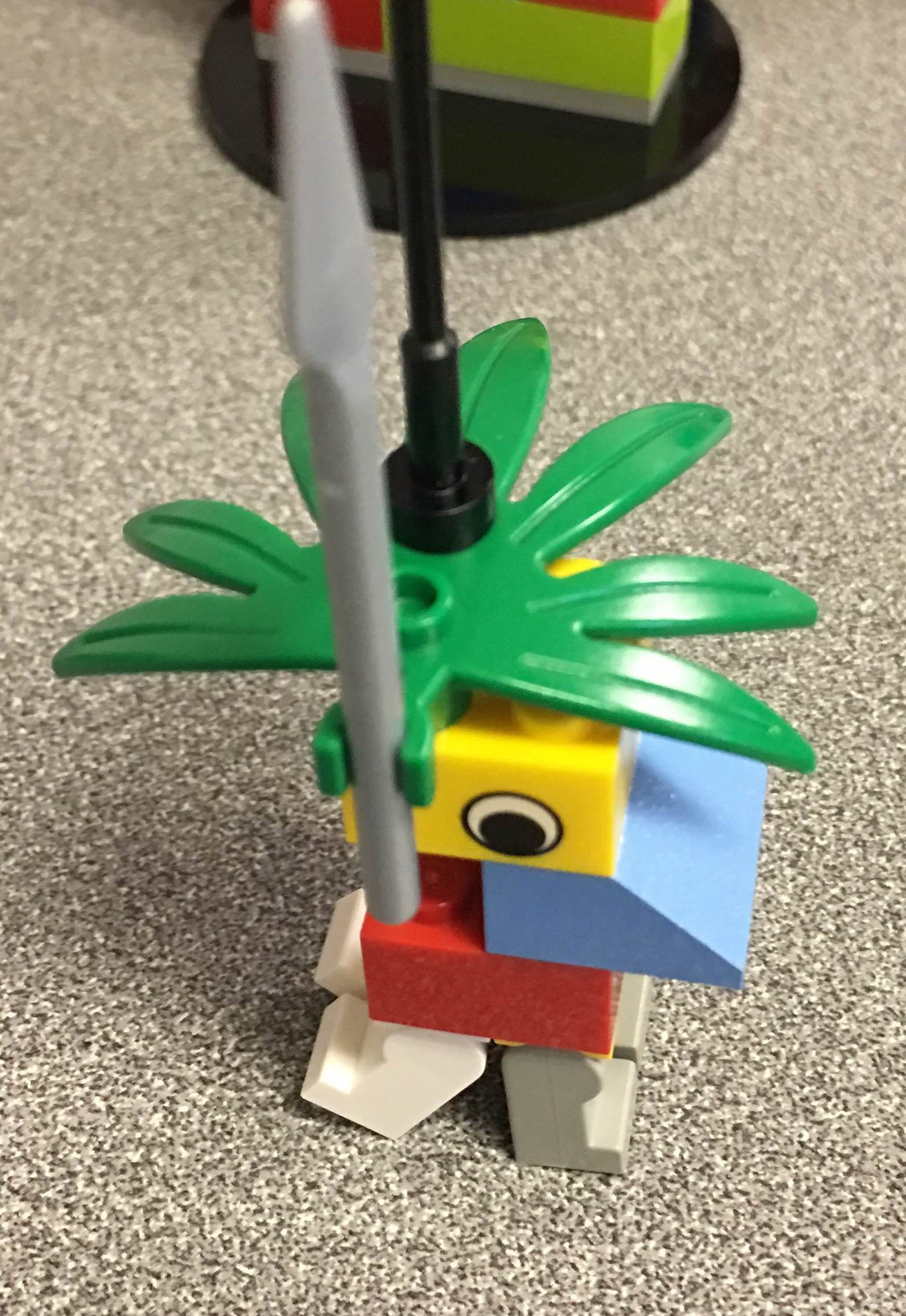Andrew Masterson wrote in The Sydney Morning Herald how Lego moves from the toybox to serious science.
Recent studies have deployed Lego bricks in fields as diverse as biology, surgery, oceanography, computer science, climate change, business modelling, vehicle safety, and brainwave technology for the disabled.
Many a boozy post-prandial dinner party conversation has explored the vexing question of identifying the single most useful product ever invented. Conclusions usually come to rest on the ball-pen hammer, with which anything may be dismantled, or gaffer tape, with which all things may be repaired.
A much stronger contender, at least to judge by the academic literature, has to be the Lego brick. To children, Lego is a jolly toy. To parents it is a painful discovery lurking in the carpet. To boffins, however, it is a multi-faceted tool without equal.

All hands Legos combination of predictability and versatility appeals to kids and scientists alike. Photo by Glenn Hunt
In the past two years alone peer-review journals across a wide range of disciplines have been fair stuffed with papers citing Lego as a key component of experimental research.
The Lego brick, it seems, is more popular than even the ubiquitous Petri dish in laboratories. Recent studies have deployed the brightly coloured little bits of plastic in fields as diverse as biology, surgery, oceanography, computer science, climate change, business modelling, vehicle safety, and brain-wave technology for the disabled.
Most of these experiments, of course, use Lego with deliberate forethought. In the area of oceanography, however, its value is the result of pure chance. Or, to put it another way, catastrophic accident.
In 1997, a huge wave crashed into a gigantic cargo ship, the Tokio Express, as it chugged past the northern coast of the English county of Cornwall. The wave rocked the ship, sending overboard a shipping container that held almost 5 million bits of Lego.
Today, 17 years later, it is still washing ashore. Where and when it does so – retrieved by beachcombers – is providing useful data for studying sea currents. One Florida oceanographer, Curtis Ebbesmeyer, has been studying the find frequencies and locations for years. He estimates the pieces might well have travelled as much as 99,000 kilometres since they entered the water, and fully expects to find a bit of it washed up near Miami any day now.
The Lego used by the Department of Science and Engineering at Iowa State University was probably bought in a shop rather than scabbed up at the beach. Researchers at the school recently published a paper in the respected journal PLoS One, demonstrating how the bricks were perfect for constructing “centimetre scale biological environments” for plants.
The team, led by Dr Kara Lind, found that the bricks could be used to construct precisely measured containers in which plant root development could be observed. The little Legolands, the report concluded, were places “in which structural obstacles and chemical gradients can be precisely engineered to mimic soil.”
It is the combination of predictability and versatility that appeals to kids and scientists alike. And while children might like to exploit those qualities to build, say, the Batmobile, a group of surgeons in Hong Kong is using them to fix deformed faces.
Jaw and facial surgery generally only proceeds after a detailed full-scale plaster model has been built – a field known as orthognathics. A team at the Hong Kong Department of Health, led by surgeon Dr Chee Chee Tsang, reported that using Lego “requires less time to set up compared with the conventional plaster model method”. It also allowed for more precise measurement of how the component parts of the rebuilt jaw would eventually interact.
The Lego Company’s first products were wooden toys, but the switch to the familiar plastic brick came in 1949. The polymer chosen is a particularly hardy beast – so much so that when the nuclear holocaust eventually comes, Lego bricks will be one of the few things to survive alongside cockroaches and Keith Richards.
This component longevity has not prevented Lego having a role to play in the creation of super-new cutting-edge materials. In June this year a team of Chinese chemists revealed the key to their invention of a brand new type of fluid.
“Inspired by the assembly of Lego toys,” wrote team leader Ma Chunxin, possibly losing clarity in translation, “hydrogel building blocks with heterogeneous responsiveness are assembled utilising macroscopic supramolecular recognition as the adhesion force.”
The Lego Corporation has its own dedicated research branch, called the Lego Foundation. Its chief activity surrounds a sort of Lego-for-grown-ups system called Lego Serious Play. It’s primarily a set of visualisation tools for business management, so contributes more to economics than to technology.
But Lego’s other grown-up line, known as Mindstorms, is extremely popular in the hard sciences. The Mindstorms series combines building bricks with simple robotics. As such it is arguably more popular with computing and engineering students than it is with sad young men who wear army surplus coats and have unhealthy fascinations with trains.
Its post-doctoral research applications are varied indeed. A group at the Copenhagen Business School in Denmark, for example, is using Lego to develop small highly interactive units that will allow home gardeners to become site-specific climate change monitors.
A team in Missouri has developed a system that uses Lego in combination with a smartphone to accurately test the propensity of various makes of tractor to roll over.
Perhaps most interesting, however, is the work of researchers at the University of Science and Technology in Southern Taiwan. A team led by Dr S.C. Chen has built a Lego robot capable of turning pages.
That in itself, as any coat-wearing trainspotter will tell you, is old hat. Dr Chen’s team, however, has succeeded in linking the page-turner, via cable, to human brainwaves. The system should eventually provide a low-cost way for profoundly disabled people to navigate their own way through books and magazines.
And that – should the after-dinner argument require still further evidence – is something you absolutely can’t do with a hammer or a roll of tape.









 Become a LEGO Serious Play facilitator - check one of the upcoming training events!
Become a LEGO Serious Play facilitator - check one of the upcoming training events!